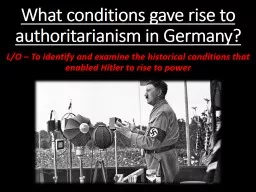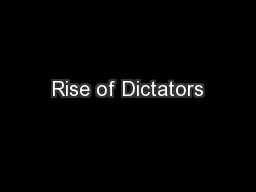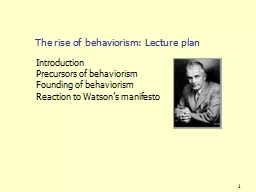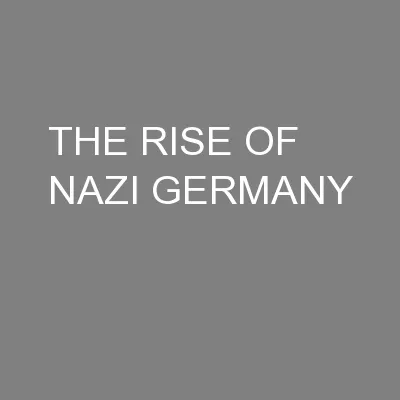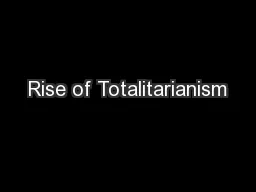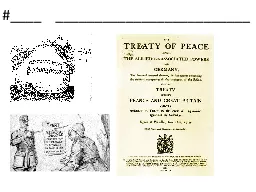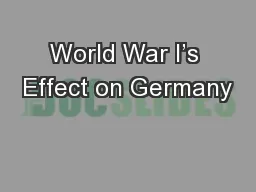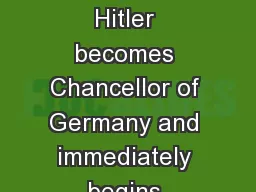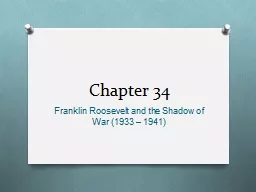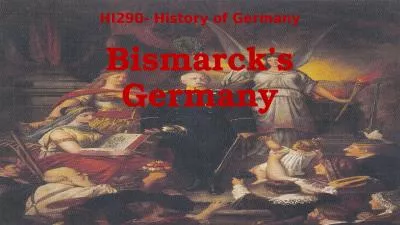PPT-What conditions gave rise to authoritarianism in Germany?
Author : cheryl-pisano | Published Date : 2017-09-24
LO To identify and examine the historical conditions that enabled Hitler to rise to power The Rise of Authoritarian States Authoritarian governments are states
Presentation Embed Code
Download Presentation
Download Presentation The PPT/PDF document "What conditions gave rise to authoritari..." is the property of its rightful owner. Permission is granted to download and print the materials on this website for personal, non-commercial use only, and to display it on your personal computer provided you do not modify the materials and that you retain all copyright notices contained in the materials. By downloading content from our website, you accept the terms of this agreement.
What conditions gave rise to authoritarianism in Germany?: Transcript
Download Rules Of Document
"What conditions gave rise to authoritarianism in Germany?"The content belongs to its owner. You may download and print it for personal use, without modification, and keep all copyright notices. By downloading, you agree to these terms.
Related Documents

